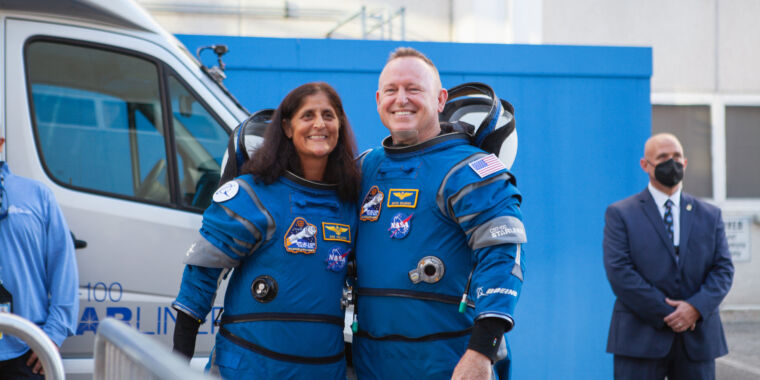After months of consideration, NASA said Thursday that it will finally decide the fate of two astronauts on board the International Space Station, Butch Wilmore and Suni Williams, by this weekend. As soon as Saturday, the two crew members will learn whether they’ll return on a Starliner spacecraft in early September or a Crew Dragon vehicle next February.
On the eve of this fateful decision, the most consequential human spaceflight safety determination NASA has had to make in more than two decades, Ars has put together a summary of what we know, what we believe to be true, and what remains yet unknown.
Why has NASA taken so long?
Wilmore and Williams arrived at the International Space Station 11 weeks ago. Their mission was supposed to last eight days, but there was some expectation that they might stay a little longer. However, no one envisioned the crew remaining this long. That changed when, during Starliner’s flight to the space station, five of the 28 small thrusters that guide Starliner failed. After some touch-and-go operations, the astronauts and flight controllers at Johnson Space Center coaxed the spacecraft to a safe docking at the station.
This failure in space led to months of testing, both on board the vehicle in space and with similar thrusters on the ground in New Mexico. This has been followed by extensive data reviews and modeling by engineers to try to understand the root cause of the thruster problems. On Friday, lower-level managers will meet in a Program Control Board to discuss their findings and make recommendations to senior managers. Those officials, with NASA Administrator Bill Nelson presiding, will make a final decision at a Flight Readiness Review on Saturday in Houston.
What are the two options?
NASA managers will decide whether to send the astronauts home on Starliner, possibly as early as September 2, or to fly back to Earth on a Crew Dragon vehicle scheduled to be launched on September 24. To make room for Butch Wilmore and Suni Williams, this so-called “Crew-9” mission would launch with two astronauts instead of a full complement of four. Wilmore and Williams would then join this mission for their six-month increment on board the space station—their eight-day stay becoming eight months.
How are Butch and Suni feeling about this?
We don’t know, as they have not spoken to the media since it became apparent they could be in space for a long time. However, based on various sources, both of the crew members are taking it more or less in stride. They understand this is a test flight, and their training included the possibility of staying in space for an extended period of time if there were problems with Starliner.
That’s not to say it’s convenient. Both Wilmore and Williams have families back on Earth who expected them home by now, and the station was not set up for an extended stay. Wilmore, for example, has been having to sleep in a science laboratory rather than a designated sleeping area, so he has to pack up his personal things every morning.
What does seem clear is that Wilmore and Williams will accept NASA’s decision this weekend. In other words, they’re not going to stage a revolt in space. They trust NASA officials to make the right safety decision, whatever it ends up being. (So, for that matter, does Ars.)
Why is this a difficult decision?
First and foremost, NASA is concerned with getting its astronauts home safely. However, there are myriad other secondary decision factors, and bringing Butch and Suni home on Dragon instead of Starliner raises a host of new issues. Significantly among these is that it would be devastating for Boeing. Their public optics, should long-time rival SpaceX have to step in and “rescue” the crew from an “unsafe” Boeing vehicle, would be terrible. Moreover, the company has already lost $1.6 billion on the Starliner program, and there is the possibility that Boeing will shut it down. NASA does not want to lose a second provider of crew transport services to the space station.
